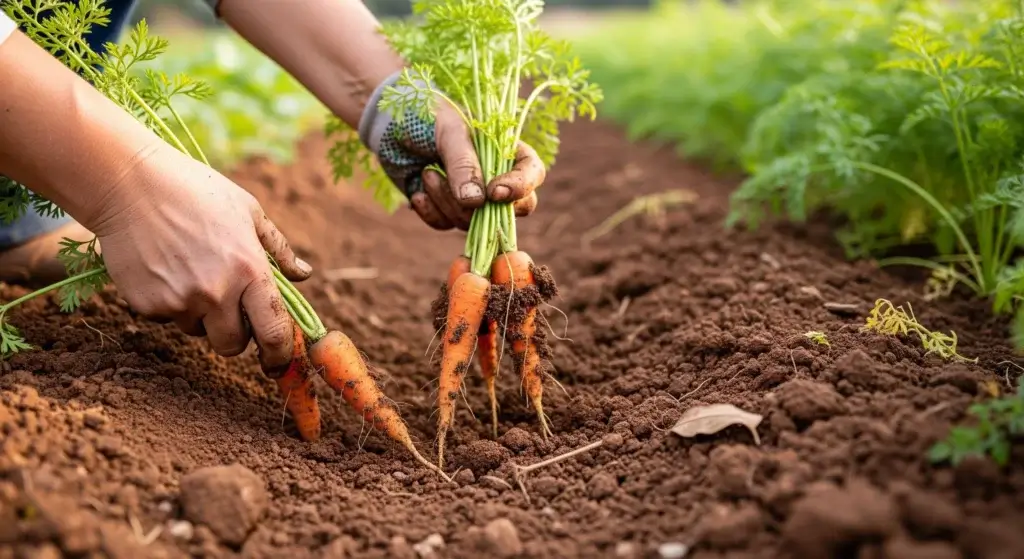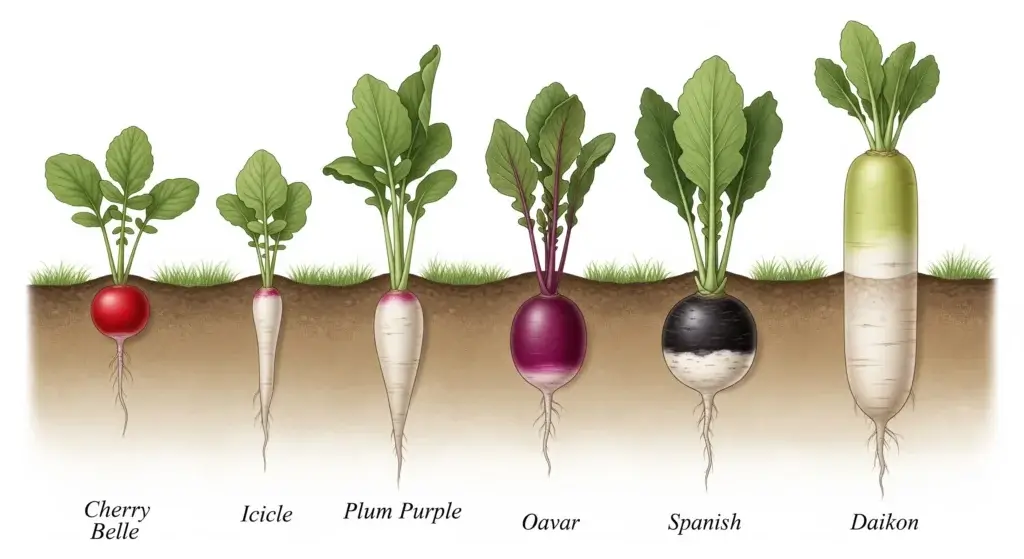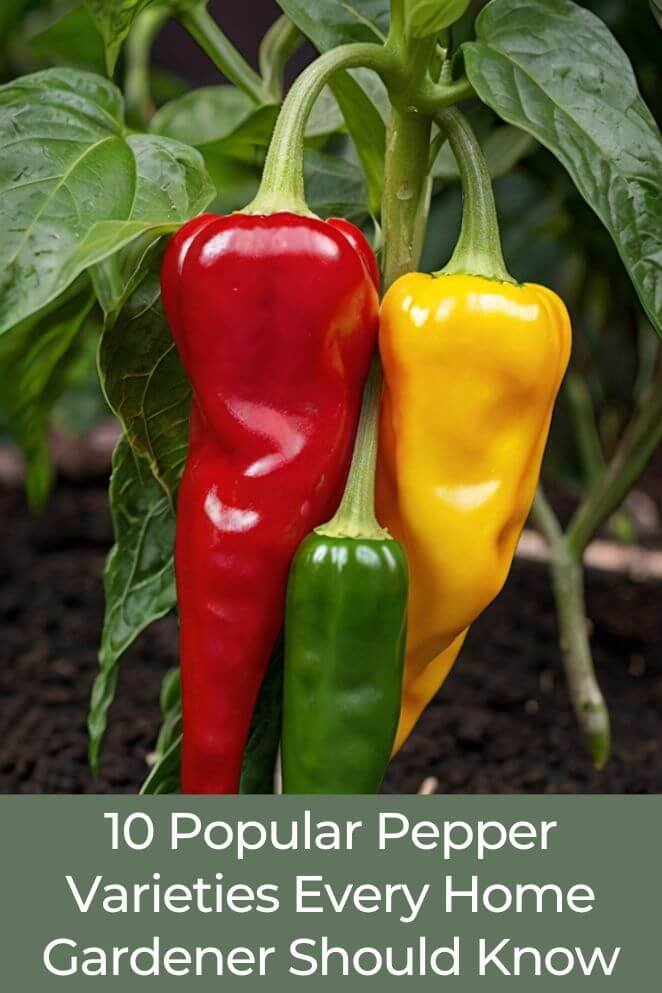
Peppers aren’t just about heat—they’re flavor-packed, colorful, and perfect for cooking or growing.
With so many types out there, it’s easy to get lost in the pepper aisle (or seed catalog).
Don’t sweat it—we’ve rounded up 10 awesome pepper varieties with the need-to-know: flavor, heat level (Scoville style), how to use them, and tips to grow your own.
Whether you’re a hot sauce hero or just here for the sweet bells, there’s a pepper with your name on it.
Why Learn About Different Pepper Varieties?
This isn’t just for chefs or green-thumb gurus.
Knowing your peppers can seriously level up your food and your garden game. Here’s why:
Flavor matters
Not every pepper is here to burn your face off.
Some are sweet, smoky, citrusy, or even fruity. (Yes, fruity. Peppers contain multitudes.)
Right heat level
Pick the right heat for your vibe.
One bite of a ghost pepper when you were expecting a bell? That’s a villain origin story waiting to happen.
Better gardening
Some peppers need full sun and heat, others are chill with cooler temps.
Know what they like, and they’ll love you back.
Culinary versatility
Want pickles? Grab a banana pepper.
Making salsa? Call in the jalapeños.
Trying to impress your foodie friends? Bust out an heirloom variety like a pro.
So whether you’re stuffing bell peppers, seeding serranos, or just trying not to cry into your hot sauce, this guide will help you find your perfect match.
Beyoncé has a favorite pepper—and you should too.
- Read also: Turn Up the Heat! Secrets on How to Grow Peppers Hotter
- Read also: Peppers and Pals: A Guide to Companion Planting for Peppers

10 Popular Pepper Varieties
1. Bell Pepper (Capsicum annuum)
- Heat level: 0 SHU (aka zero drama)
- Flavor: Sweet and crisp, like a veggie candy
- Colors: Green, red, yellow, orange, purple—yes, it’s basically the Skittles of the pepper world
- Best For: Stuffing, stir-fries, salads, snacking straight from the fridge
Bell peppers are the Beyoncé of the pepper world—versatile, crowd-pleasing, and everywhere.
No heat, all flavor.
Red ones are fully ripe and extra sweet; green ones are picked early and a little more sassy (read: slightly bitter). Kid-friendly, heat-averse-approved.
Growing tip: Loves sunshine and warmth (70–85°F). Keep the soil moist but not soggy, like a good skincare routine.
2. Jalapeño
- Heat level: 2,500–8,000 SHU (mild kick, not a knockout punch)
- Flavor: Earthy, grassy heat with just enough zing
- Color: Green when young, red when ripe and sweeter
- Best For: Salsas, nachos, poppers, pickling, and flexing in taco night
Jalapeños are the cool older sibling of the pepper world—hot enough to bring personality, but won’t ruin your day.
Slice ‘em on nachos, blend ‘em into salsa, or smoke them into chipotle and feel like a total food wizard.
Growing Tip: Pick when they’re 3–5 inches long. Red ones are mature and slightly sweeter—think jalapeño glow-up.
3. Habanero
- Heat level: 100,000–350,000 SHU (aka “Warning: Dragon Breath”)
- Flavor: Fruity, citrusy, and blazing hot
- Color: Orange, red, chocolate, white (they come in spicy Skittles shades)
- Best for: Hot sauces, jerk chicken, anything that dares to bite back
Habaneros may look cute and colorful, but they’re not here to play.
Their tropical aroma is deceiving—it’s sunshine on the nose, fire on the tongue.
A staple in Caribbean cooking, these little dynamos bring major heat with a sweet twist.
Pro tip: Wear gloves when handling. Seriously. One accidental eye rub and you’re in a telenovela-level drama.
4. Banana Pepper
- Heat level: 0–500 SHU (basically the chillest pepper at the party)
- Flavor: Mild, tangy, and just a little sweet
- Color: Bright yellow to orange—like a banana, but with spice potential
- Best for: Pickling, sandwiches, pizza toppings, giving your meal a glow-up
Banana peppers are the sidekick you didn’t know you needed.
They bring a gentle tang, some color, and just enough sass to your sandwich or salad.
Usually found pickled and living their best deli-case life.
Pro Tip: Want no heat? Look for the “sweet banana” type. It’s all the flavor, none of the fire. Great for beginners or anyone spice-averse.
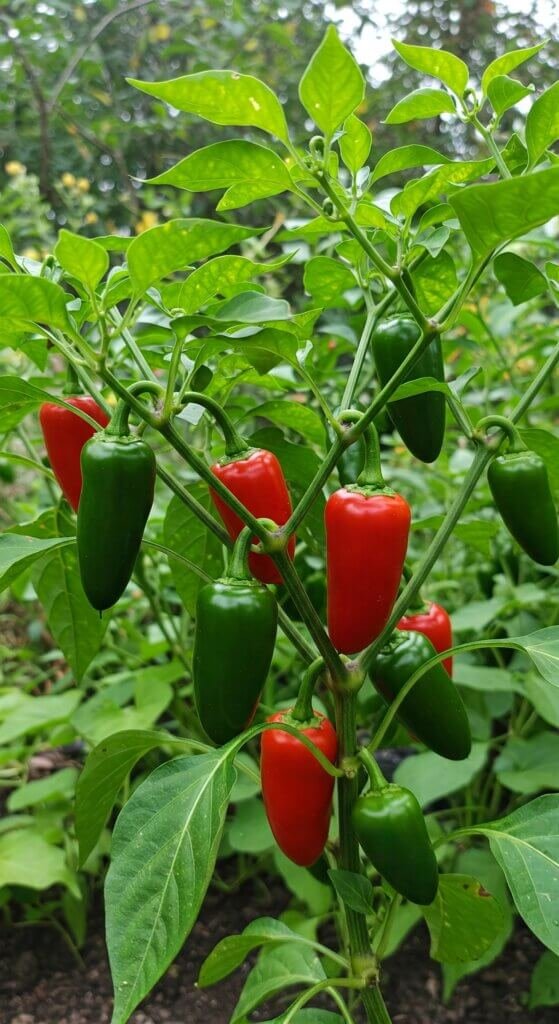
5. Cayenne Pepper
- Heat level: 30,000–50,000 SHU (hot but not ghost pepper-level scary)
- Flavor: Hot, earthy, and a little smoky
- Color: Bright red—like a traffic light saying “brace yourself”
- Best for: Drying and grinding into spice, hot sauces, health shots
Cayenne is basically the rockstar of your spice rack.
You’ve seen it in powdered form, but it starts as a skinny, fiery red pepper.
It’s the secret weapon in many hot sauces and those spicy lemon-detox drinks people swear by on TikTok.
Fun fact: Cayenne’s packed with capsaicin, which may help rev up your metabolism, improve circulation, and even ease joint pain. That’s hot in more ways than one.
6. Poblano
- Heat level: 1,000–2,000 SHU (gentle warmth, not a burn-your-face-off situation)
- Flavor: Mild and earthy, gets smoky and rich when roasted
- Color: Deep green when fresh, turns reddish-brown when ripe/dried
- Best for: Stuffing (chiles rellenos!), roasting, mole sauces
Think of poblanos as the cozy sweater of the pepper family—comforting, flavorful, and perfect for layering (with cheese, beans, and rice).
They’re a staple in Mexican cooking and turn into ancho chiles when dried—aka the smoky soul of a good mole.
Cooking tip: Roast and peel the skin before stuffing. It unlocks that sweet, smoky flavor and makes the pepper way more melt-in-your-mouth.
7. Serrano
- Heat level: 10,000–23,000 SHU (like jalapeño’s bolder cousin)
- Flavor: Sharp, clean heat with a fresh bite
- Color: Starts green, ripens to red (like it’s leveling up)
- Best for: Raw salsas, taco toppings, sauces with attitude
Serranos are like the jalapeños that went to the gym and came back shredded.
They’re spicier, sleeker, and pack a punch in smaller bites.
Great for fresh salsas that need a kick without the drama.
Bonus: their thin skins mean no peeling—just chop and drop.
Growing tip: These plants are overachievers. One plant can crank out dozens of peppers, so clear some space in your fridge (and your mouth).
8. Ghost Pepper (Bhut Jolokia)
- Heat level: 800,000–1,041,000 SHU (aka “Why did I do this to myself?” level)
- Flavor: Fruity and smoky—right before it sets your soul on fire
- Color: Red, orange, chocolate, white (but they all scream danger)
- Best for: Ultra-hot sauces, dares, chili challenges, and TikTok chaos
Ghost peppers aren’t just hot—they’re legendary.
Born in Northeast India and once the world’s hottest pepper, these bad boys are for people who laugh in the face of Scoville charts.
A tiny bit goes a long way. Like, grains-of-sand small.
Warning: Gloves. Goggles. Ventilation. Maybe a fire extinguisher. Handle like you’re in a chemistry lab, not your kitchen. You’ve been warned.
9. Shishito Pepper
- Heat level: 50–200 SHU (basically harmless… until it’s not)
- Flavor: Mild, grassy, a little sweet—like a green bell pepper’s cool cousin
- Color: Green when young, red when mature and extra chill
- Best for: Pan-searing, tempura, bougie appetizers
Shishitos are the Russian roulette of the pepper world—9 out of 10 are mild and mellow, but that one spicy rebel? Surprise!
Perfect for snacking, especially when blistered in olive oil and hit with flaky salt like they’re on a Food Network close-up.
Cooking tip: Toss ‘em whole into a hot pan and let ‘em char like they’re sunbathing at a Tokyo beach club. Serve with a squeeze of lemon and you’re golden.
10. Carolina Reaper
- Heat level: 1.4 to 2.2 million SHU (a.k.a. the fire-breathing dragon of peppers)
- Flavor: Starts sweet… then boom—volcanic
- Color: Red, wrinkled, and looks like it’s angry at life
- Best for: Extreme hot sauces, YouTube challenge content, and daring your friends
The Carolina Reaper is not for taco night.
This Guinness World Record holder is a hybrid of Ghost Pepper and Red Habanero—with a fruity start and a finish that feels like licking lava.
Proceed with extreme caution (and a gallon of milk nearby).
Extreme caution: Wear gloves, avoid eye contact (literally), and maybe sign a waiver. Use it sparingly—like a horror movie: thrilling in small doses, traumatic if overdone.
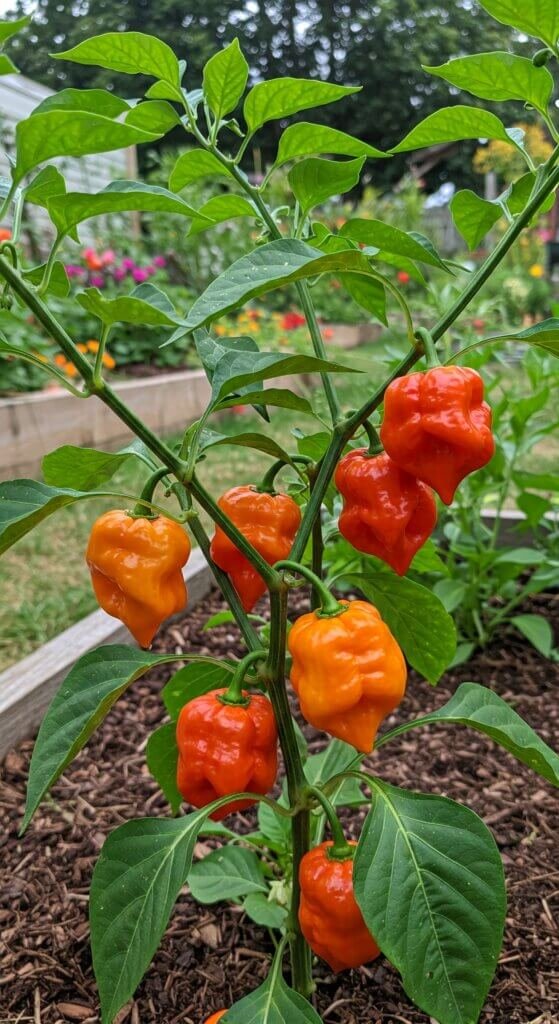
Quick Reference: Pepper Varieties Cheat Sheet
| Pepper | SHU Range | Flavor | Best Use |
| Bell | 0 | Sweet, crisp |
Stuffing, fresh salads
|
| Jalapeño | 2,500–8,000 | Mild, grassy |
Salsas, nachos, pickles
|
| Habanero | 100,000–350,000 | Fruity, hot |
Hot sauces, marinades
|
| Banana | 0–500 | Tangy, mild |
Pickling, sandwiches
|
| Cayenne | 30,000–50,000 | Hot, earthy |
Ground spice, sauces
|
| Poblano | 1,000–2,000 | Smoky, mild |
Roasting, stuffing
|
| Serrano | 10,000–23,000 | Sharp, bright |
Salsas, garnishes
|
| Ghost | 800,000–1M+ | Smoky, fiery | Extreme sauces |
| Shishito | 50–200 | Mild, grassy |
Searing, appetizers
|
| Carolina Reaper | 1.4M–2.2M | Sweet, explosive |
Challenges, ultra-spicy
|
How to Choose the Right Pepper for Your Needs
Whether you’re a kitchen rookie or a backyard garden boss, choosing the right pepper is like picking your starter Pokémon—each one has its own vibe.
Here’s how to match your pepper to your personality (and pain tolerance):
For beginners
Start chill. No shame in the bell pepper game.
Go for: Bell, Banana, or Poblano.
They’re sweet, mellow, and basically the golden retrievers of the pepper world—friendly, easy to handle, and great in everything from stir-fries to stuffed recipes.
For flavor adventurers
Ready to dial it up?
Try: Jalapeños, Serranos, or Habaneros.
These guys bring heat and personality. Think of them like spicy travel guides—taking you to Flavor Town (with a possible layover in Sweatville). Start small and savor the journey.
For heat seekers (aka spice masochists)
Test your limits… if you dare.
Go nuclear with: Ghost Pepper or Carolina Reaper.
Warning: These are not seasoning—they’re an experience. Great for making hot sauce, starting YouTube challenges, or questioning your life choices.
For gardeners
Growing your own? Think like a pepper.
Most peppers love sunbathing (6–8 hours daily), warm soil, and steady watering (but not soggy roots—they hate wet feet).
Match your climate to the variety—hotter zones can handle spicier, tropical types; cooler zones do better with mild or early-harvest peppers.

- Read also: Peppers on Fire: The Ideal Soil pH for Growing Luscious Peppers
- Read also: A Beginner’s Guide: How Crop Rotation Can Save Your Pepper Garden
Conclusion: Spice Up Your Life, One Pepper at a Time
Peppers do more than bring the burn—they boost flavor, color, and kitchen cred.
From sweet bell peppers to fiery Carolina Reapers, there’s a pepper for every tastebud and mood.
Start mild or go wild—just know your limits (and maybe keep milk nearby).
Once you start, you might just become a full-on pepper nerd. And honestly? We support that.
Now go forth and spice responsibly.

